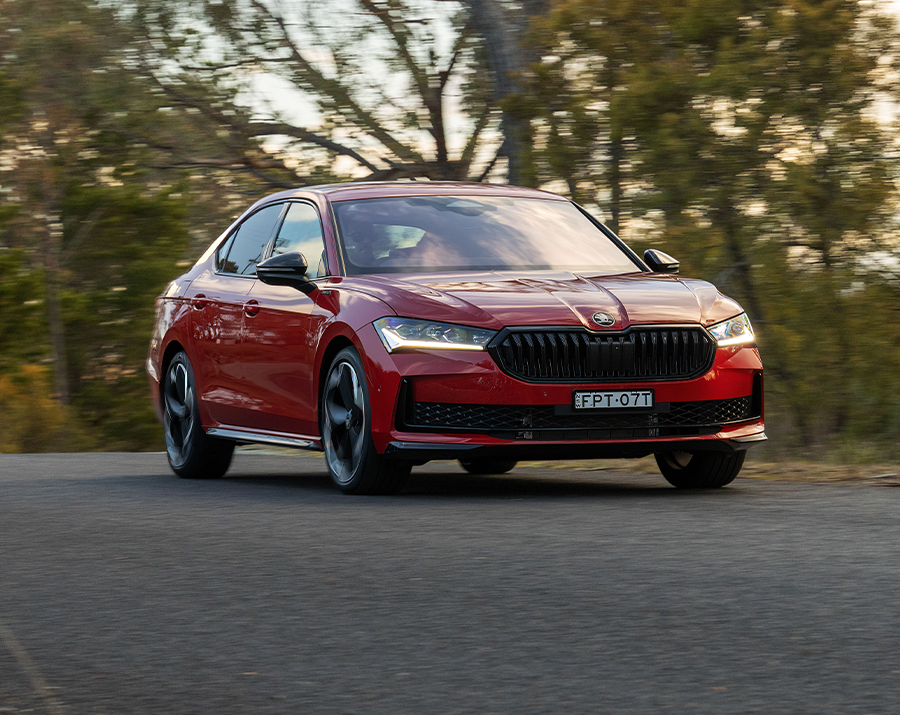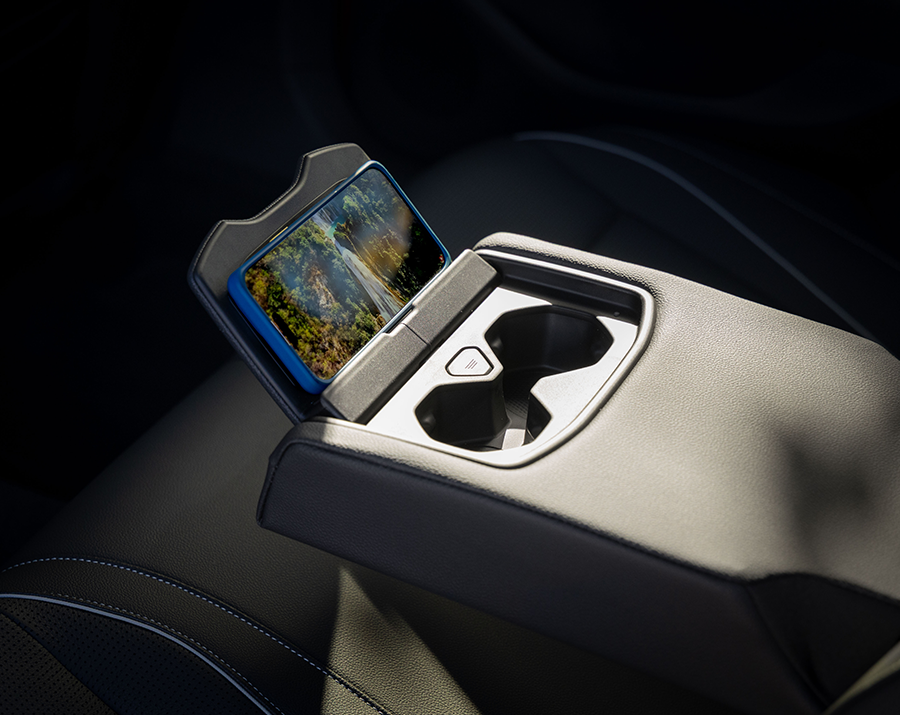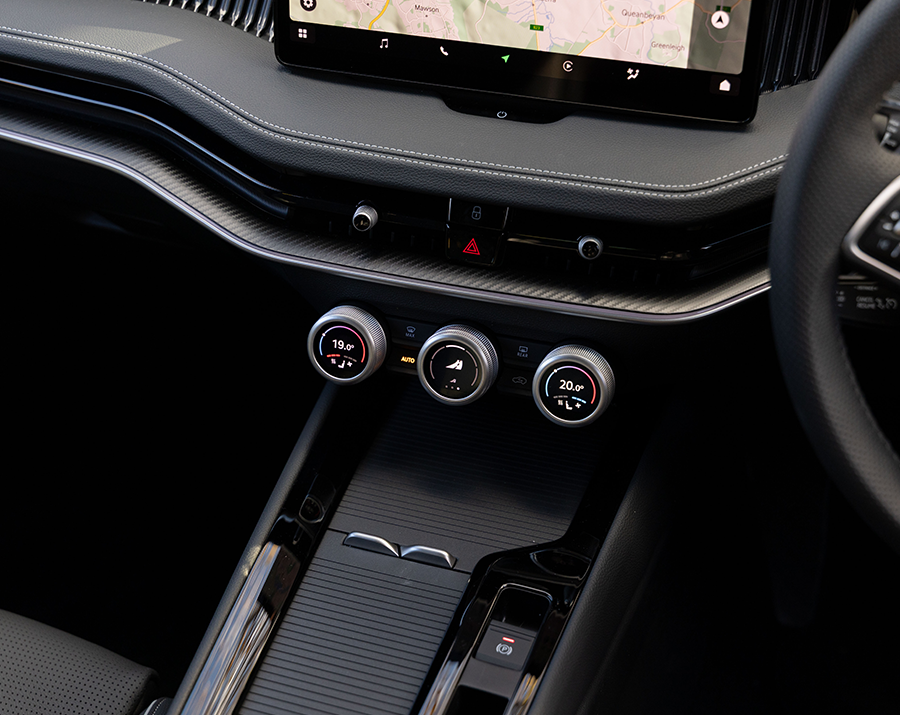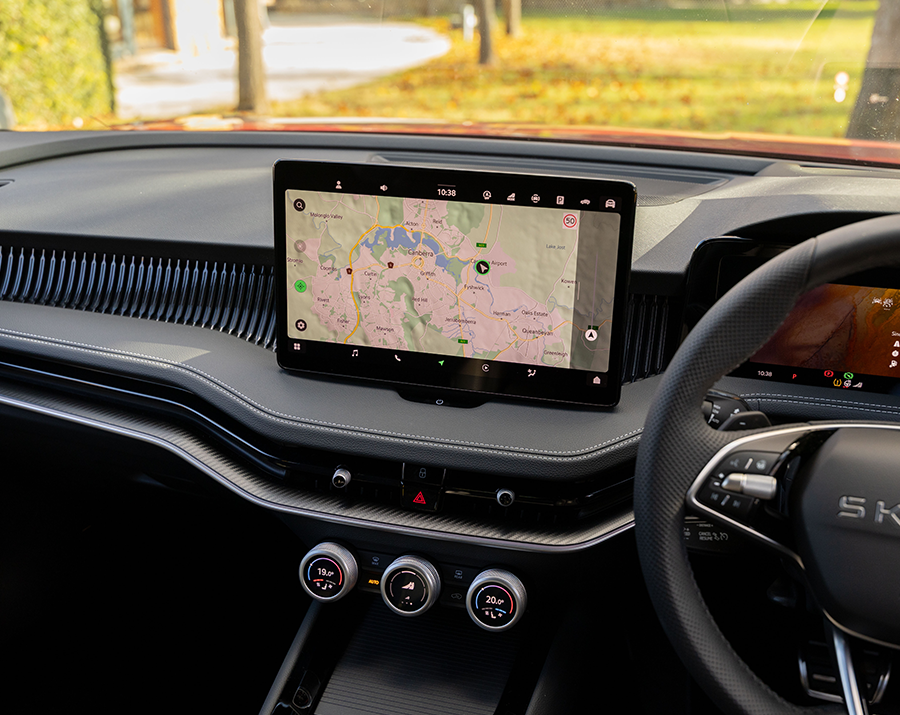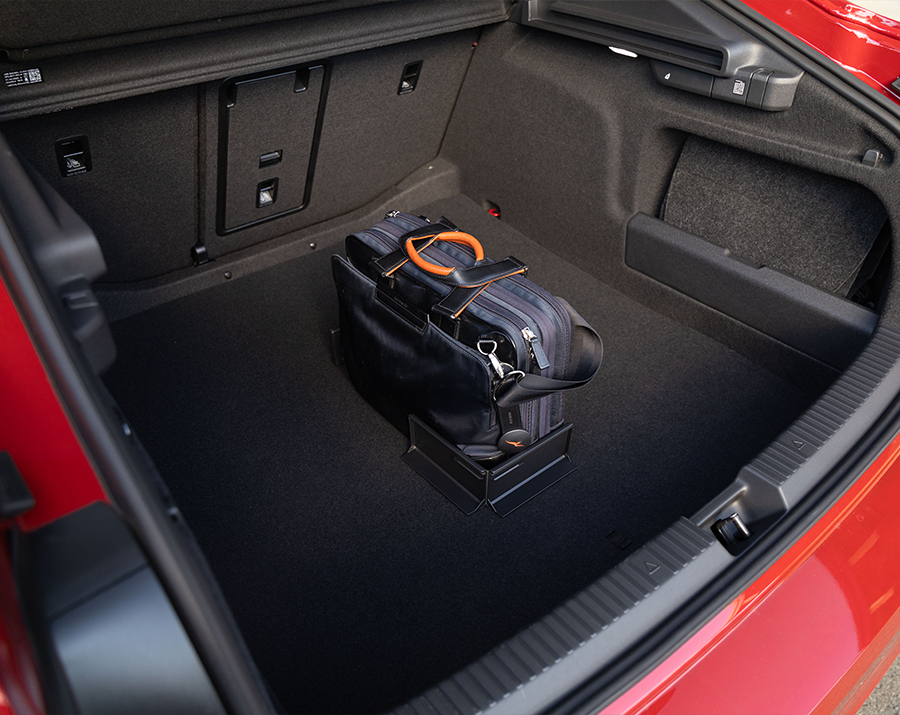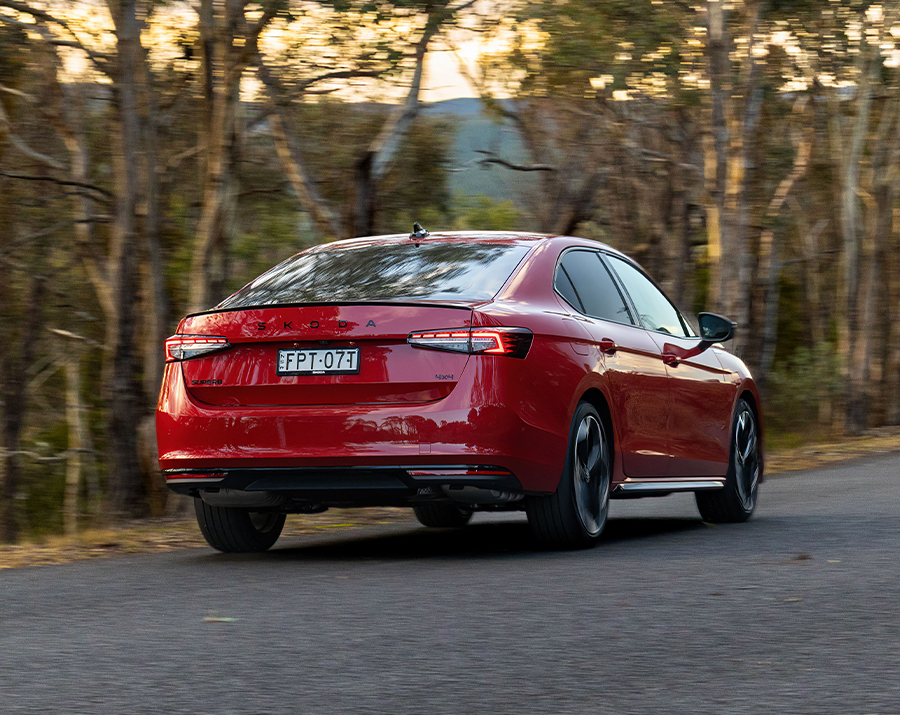
Considering it was once the bread and butter of the Australian car industry, the large sedan’s plummeting popularity has been nothing short of incredible.
Only 10 years ago Australia was still manufacturing competent, affordable family sedans and wagons with enough spice to get past a caravan before the overtaking lane ended. Not even homegrown stalwarts like the Commodore and Falcon could survive fast-changing consumer tastes, let alone imports such as the Kia Stinger or Chrysler 300.
That brings us to the new Skoda Superb. Even within the all-encompassing Volkswagen Group, it now flies the large passenger car flag amid fallen names like the Passat and Arteon. In fact, part of the reason the fourth-generation model was introduced into Australia was because officials saw a segment with virtually no rivals.
This makes the fourth-generation Superb even more special.
The Skoda Superb range is a relatively simple one in Australia, with a solitary Sportline grade set at $67,990 plus on-road costs for the liftback, and $68,990 plus on-road costs for the wagon.
Those prices reflect a $2000 increase on the outgoing third-generation Sportline, though Skoda argues it bundles in $10,900 worth of additional specification over the predecessor.
It’s also worth noting that as recently as 2019, you could pick up a base Superb 162TSI Style from the showroom from $43,990 plus on-road costs. Yep, much has changed.
Rivals under $70,000 are pretty thin on the ground nowadays. The plucky Hyundai Sonata N-Line is priced from $55,500 plus on-road costs, while a top-line Toyota Camry SL is priced at $53,990 plus on-road costs.
Rivals over $70,000 are a little more plentiful, though they are positioned closer to $100k. Think the Audi A4 and A5, the BMW 3 Series and 5 Series, and the Mercedes-Benz C-Class and E-Class.
The Skoda Superb offers all the trinkets you’d expect at this price point, which is well into executive sedan territory. But above all else, its biggest luxury is space.
There are acres of room across the first two rows of seating, with occupants treated to cavernous door openings, comfortable leather seats and accommodating dimensions, no matter which way you spin it.
This is despite a relatively tidy 4.9-metre footprint in traffic, straddled over a 2841mm wheelbase.
All outboard seats are fitted with seat warmers (as well as ventilation on the front ones), there are soft contact points at every corner, and the new dashboard design looks and feels fresh.
There’s a practical veneer to the cabin design, too. The seemingly streamlined ‘smart dials’ offer a range of adjustment to save you burrowing through screen sub menus, while an assortment of cubbies and compartments ensure strong day-to-day amenity. Moving the gear selector to a stalk on the steering column has only liberated additional space.
There are a few Skoda-isms present, too, like the umbrella in the driver’s door and the front rubbish bin integrated into the door card. Oddly, the Superb doesn’t get the clever mechanism fitted to the Kodiaq and Octavia RS, which pops out and protects both your door and the car beside it when you exit.
USB-C ports feature front and rear, while the rear seats are also treated to a foldout centre armrest with cupholders and accommodation for a tablet, thanks to a neat bracket. The rear is also fitted with air vents, integrated sunshades, and an open glasshouse, giving the Superb strong family-car credentials.
Sedan or wagon, the boot capacity is a win: 589 litres for the liftback and a super cavernous 634-litre layout in the wagon (expanding to 1795 litres and 1920 litres with the split-fold seats laid flat).
The boot’s huge dimensions are bolstered by a space-saver spare tyre underneath, clever storage innovations, and quick-stow levers for the split-folding rear seats.
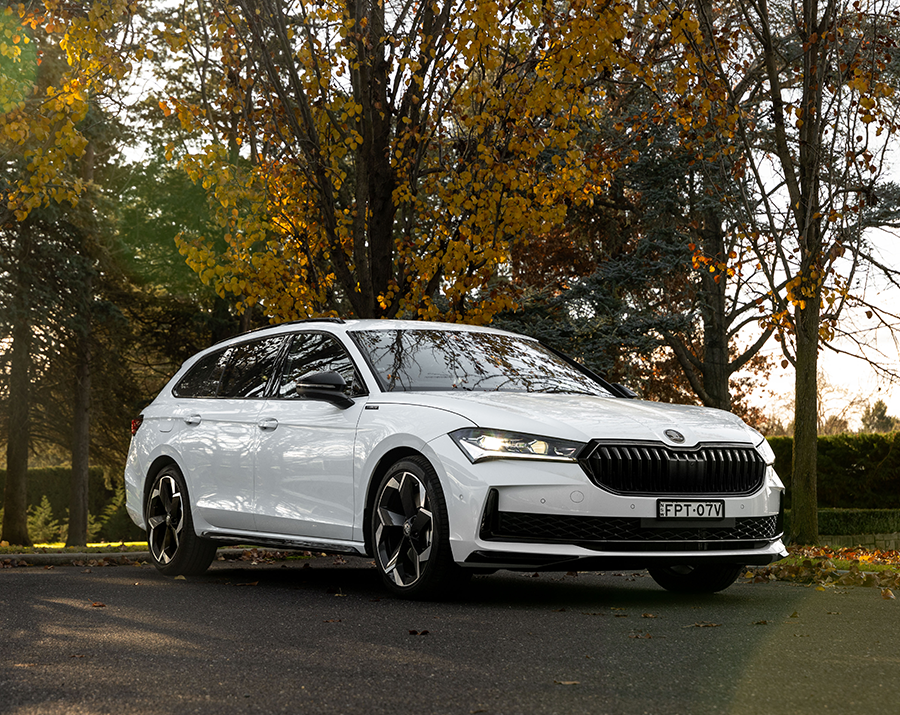
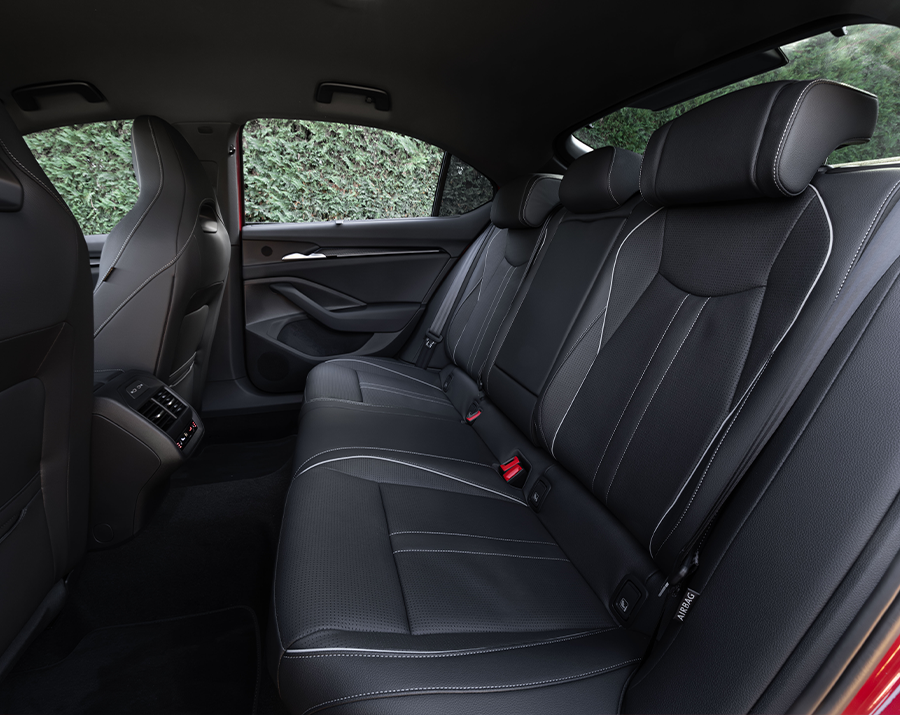
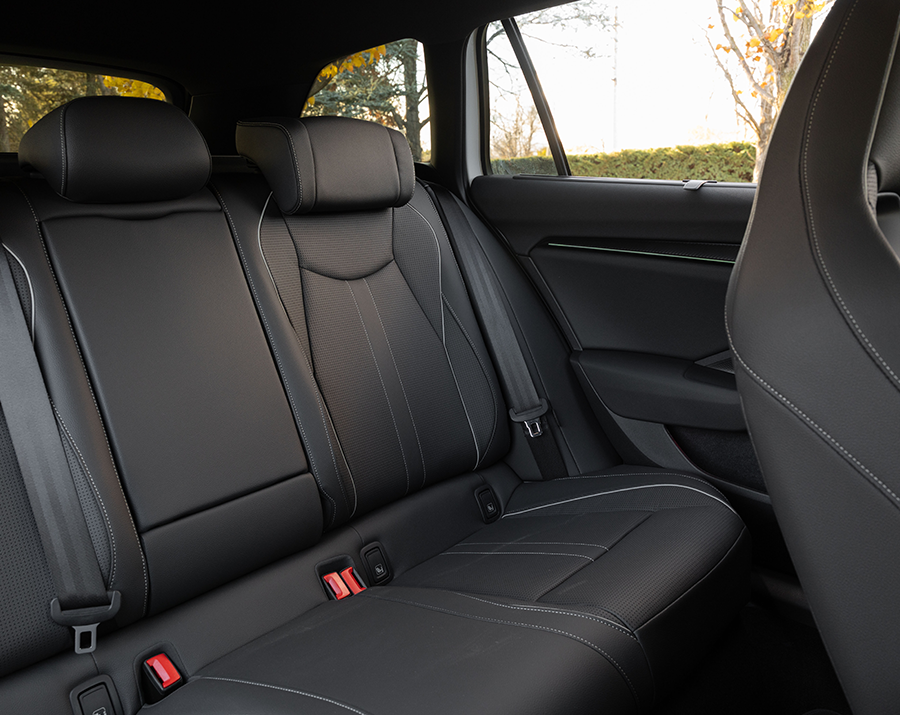
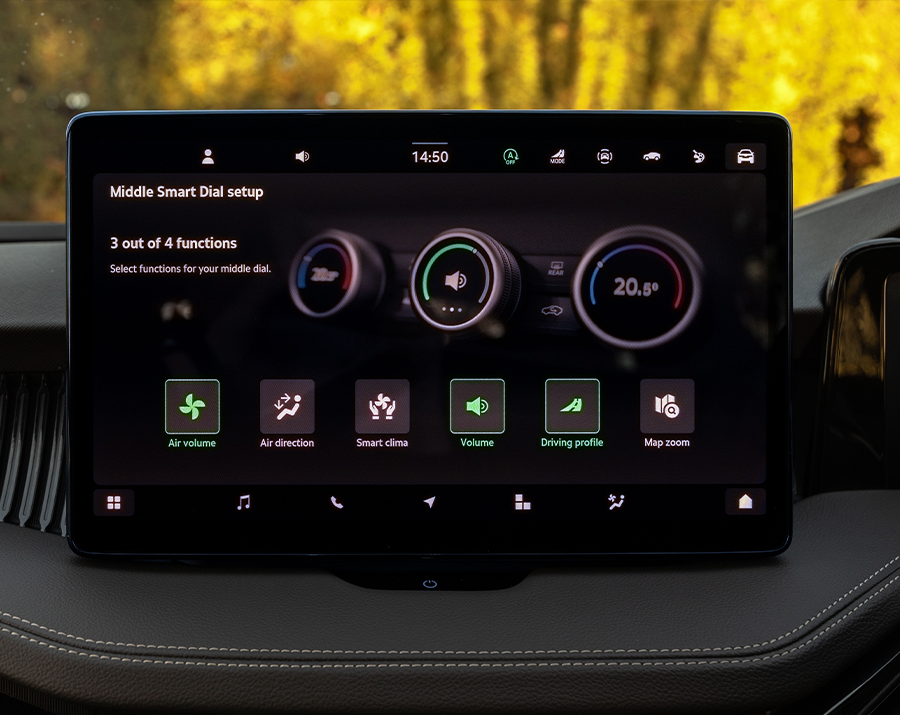
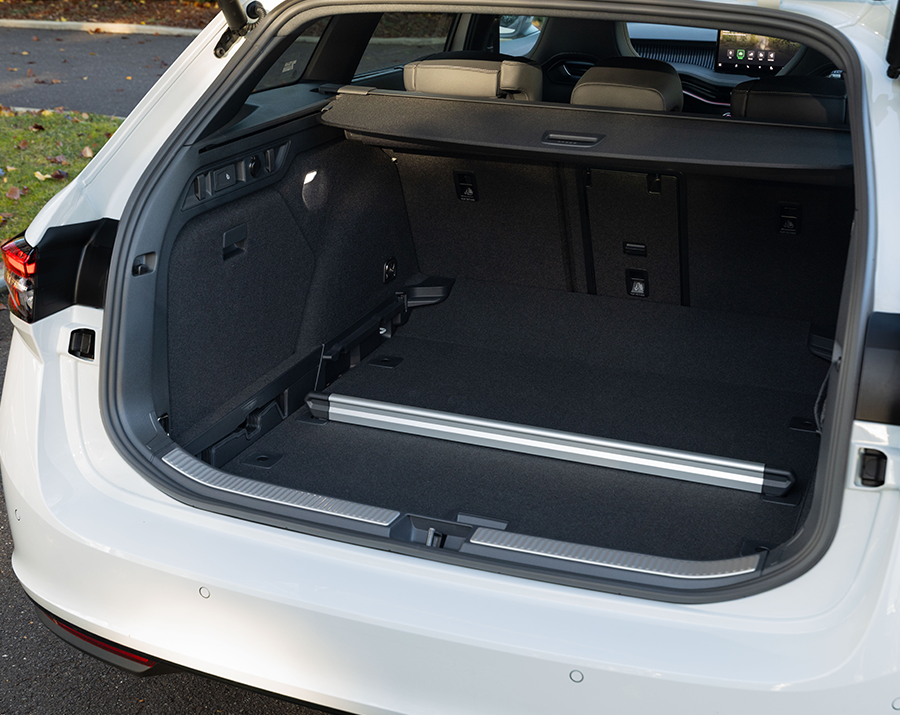
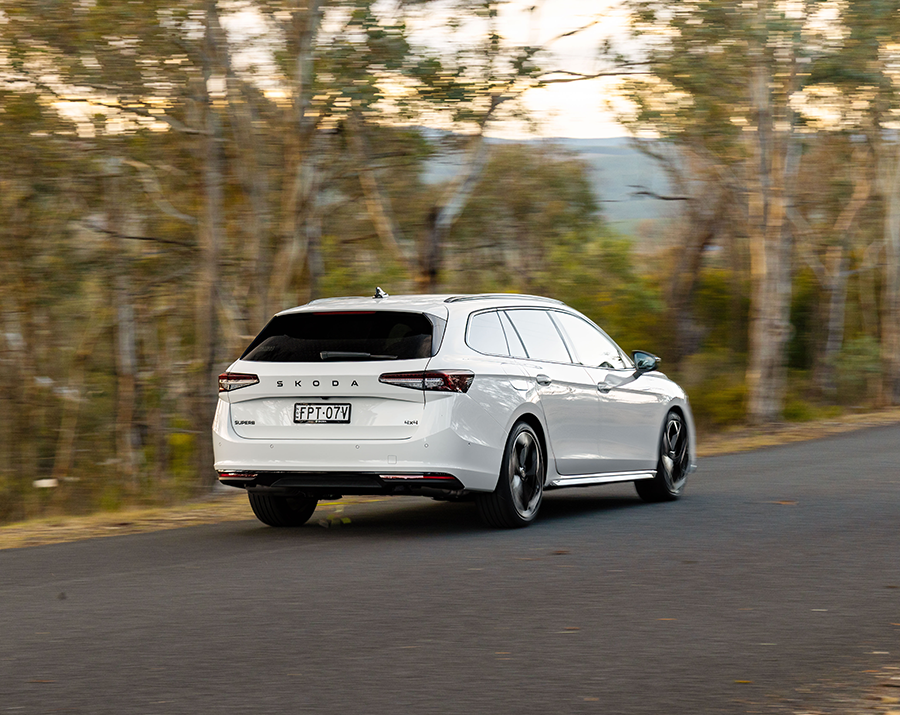
The Skoda Superb certainly isn’t shy on regular equipment for 2025, with niceties extending to 19-inch alloy wheels, matrix LED headlights with adaptive function, keyless entry and start, three-zone climate control, heated and ventilated sports front seats with power adjustment, pneumatic lumbar support, thigh support and massage function, a heated and leather-wrapped sports steering wheel with paddle shifters, and a powered tailgate.
Infotainment comprises the aforementioned 13-inch centre touchscreen display and 12-speaker Canton audio system, wireless Apple CarPlay and Android Auto, and wireless phone charging (with an integrated fan system to prevent your phone overheating). The centre screen is matched by a 10-inch virtual instrument cluster and a head-up display.
There are only two options on the Skoda Superb for 2025: premium metallic paint ($770) and a panoramic glass sunroof (wagon only, $1900).
The Skoda Superb is backed by a five-year/unlimited kilometre warranty in Australia. A five-year service pack will set buyers back $3700, based on 12-month/15,000km intervals.
New equipment has bolstered the Superb’s safety suite for 2025. In its native Europe, the updated model carries a five-star Euro NCAP rating. An Australian equivalent is yet to be announced.
Standard safety tech now includes traffic sign recognition with predictive adaptive cruise control and speed limiter, autonomous emergency braking with turn assistance and pedestrian detection, rear cross-traffic alert, exit warning, attention and drowsiness alert, lane assistance and side assistance.
Also on board are 10 airbags, a reversing camera and top-view monitoring, plus front and rear parking sensors and adaptive LED matrix headlights.
Predictably, some of the new tech proves a little annoying and detracts from the drive experience (speed sign recognition, we’re looking at you). Additionally, the lane assistance function occasionally tends to bully you back into your lane with its inputs.
The Skoda Superb range once again sources power from the Volkswagen Group’s ubiquitous EA888 2.0-litre turbo-petrol four-cylinder engine.
Power is down to 195kW (from 206kW) in this fourth generation, although torque has increased from 350Nm to 400Nm. What’s more, the spread of power is said to be broader, with maximum torque now materialising between 1650rpm and 4350rpm, and the full complement of power between 5000rpm and 6000rpm.
Also updated for 2025 is a seven-speed dual-clutch automatic gearbox, which replaces the long-running six-speed DSG. All-wheel drive carries over.
All told, the Superb’s 0-100km/h dash has been reduced by three-tenths to 5.6 seconds (5.7 for the wagon). Claimed fuel usage has also dipped marginally to 7.7L/100km combined (7.8L/100km for the wagon) using minimum 95 RON premium unleaded, ensuring decent range from its 66-litre tank.
These figures are quite strong for a drivetrain that has fundamentally been around a couple of decades – even more so given the Superb’s 1800kg heft.
It is fitted standard with dynamic chassis control (Skoda speak for adaptive dampers), which works in concert with a MacPherson strut front end and multi-link axle rear.
Our first taste of the 2025 Skoda Superb took place in the nation’s particularly fresh capital this month. Fog blanketed Canberra and surrounds, creating an at-times damp road surface, but that only served to demonstrate the all-paw Superb’s assured handling.
The big liftback and wagon duo immediately imparted a sense of confidence on the undulating roads bordering the Brindabella ranges, with accurate steering, well-weighted controls and faithful body control.
The engine, too, offers great breadth in its execution, with a zesty mid-range and enthusiasm in the higher reaches of the dial, plus a relaxed around-town demeanour to match. The seven-speed dual clutch auto tends to demonstrate some hesitation or lurchiness on take-off – a long-running complaint about its six-speed predecessor.
Ultimately, the Superb succumbs to its 1.8-tonne weight if pushed a little harder, with controlled body roll and some awkwardness during fast changes in direction. But with the family or executive brief in mind, it definitely passes muster. If the go-fast wagon brief is more your thing, the slightly smaller Skoda Octavia RS is more convincing in its dynamic execution.
Less appealing on our initial drive of the Superb was the road noise. Goodyear rubber and 19-inch wheels make for a particularly noticeable drone, especially on coarse-chip sections of bitumen.
It’s a shame, because the Superb otherwise feels, well, superb, in its open road acumen. The additional cog in the gearbox enables lower engine speed during highway passage, which tends to make the whole car feel calmer and more resolved, and the car straddles open sections of road in such a convincing manner you feel compelled to keep going.
The adaptive suspension is another highlight, soaking up niggly bumps with aplomb and providing an ideal buffer against harder-edged surfaces.
The Skoda Superb presents as a refreshing antidote to the hordes of SUVs, and indeed proves it has all the ingredients needed to be a polished family hauler.
In our minds, the stronger value equation and dynamism of the smaller Skoda Octavia RS make it a more relevant proposition in 2025. But we’re happy the Superb is still around, even if it only clocks a couple of hundred sales each year. And, for the sake of choice, the Aussie consumer should be happy too.
What we liked
What could be better?
